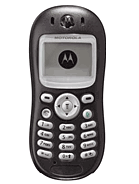Motorola C250 Radiation Levels
Head SARMotorola C250 - SAR Levels
FCC SAR Levels
- FCC Approval Date This is the date the phone SAR test was completed before the phone's release to the public as required by law. 03 November 2014
- US SAR Ratings USA Legal Limit is 1.6 W/kg USA Legal Limit is 1.6 W/kg - FCC SAR testing is measured in watts per kilogram (or W/kg) averaged over ONE gram of simulated biological tissue.
- Head SAR Level SAR test when held against your head when only using cellular service. Wifi and other transmitter are NOT active N/A
- Body SAR Level SAR test when held against your body only using cellular service. Wifi and other transmitter are NOT active N/A
- Product Specific Use SAR test when held against your body only using the phone as a hotspot. Cellular and other transmitter are NOT active N/A
- Simultaneous Transmission The highest possible SAR recorded with ALL transmitters active, Cellular, WiFi, and Hotspot N/A
- Simultaneous Head The highest possible SAR test when held against your HEAD with cellular and WiFi transmitters active, N/A
- Simultaneous Body The highest possible SAR test when held against your BODY with cellular and WiFi transmitters active, N/A
- Hotspot SAR The highest possible SAR test when held against your BODY using the phone as a hotspot with cellular and WiFi transmitters active, N/A
EU SAR Level
- EU SAR Ratings European Legal Limit is 2.0 W/kg - EU SAR testing is measured in watts per kilogram (or W/kg) averaged over TEN grams of simulated biological tissue.
- Head SAR Level N/A
- Body SAR Level N/A
Motorola C250





